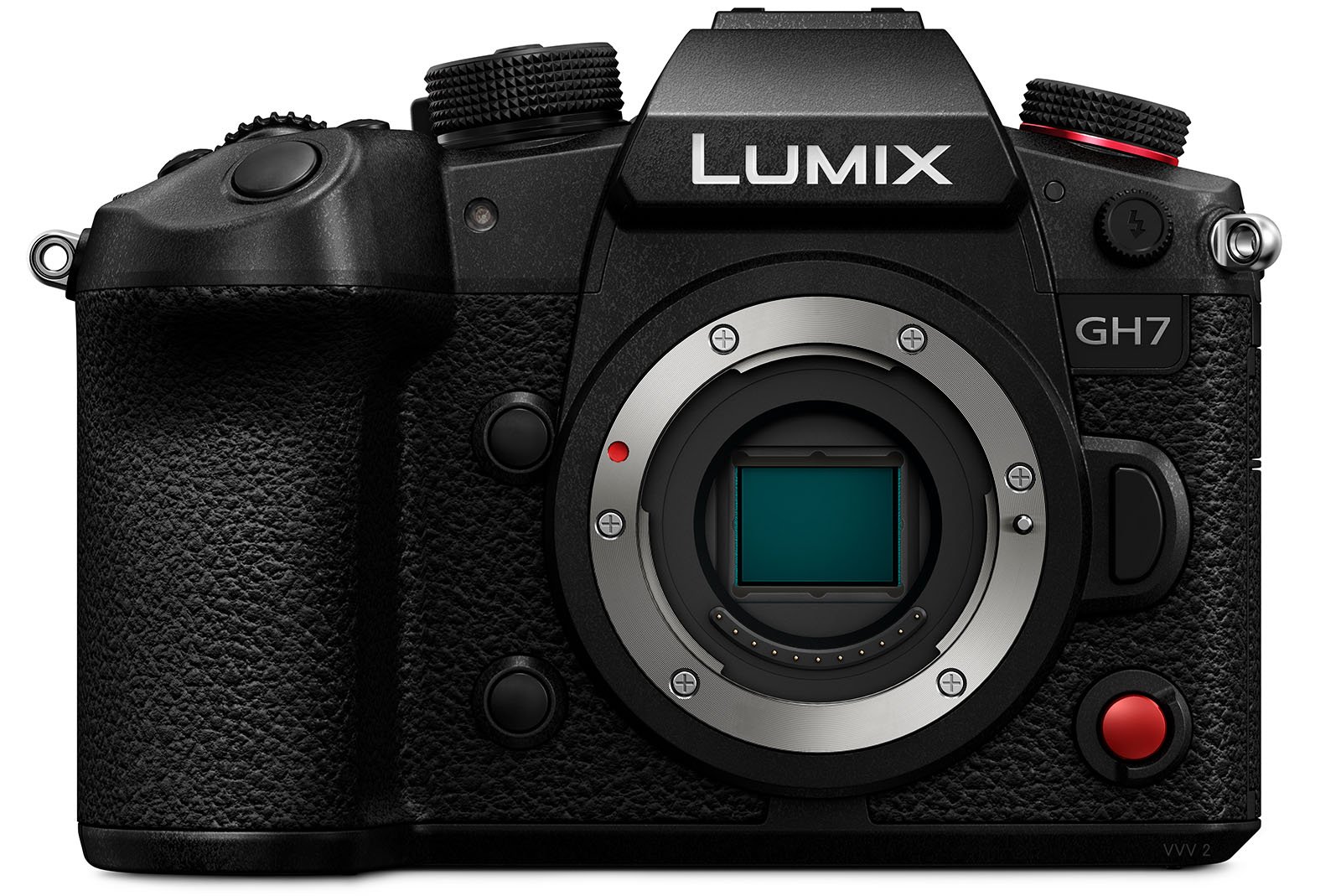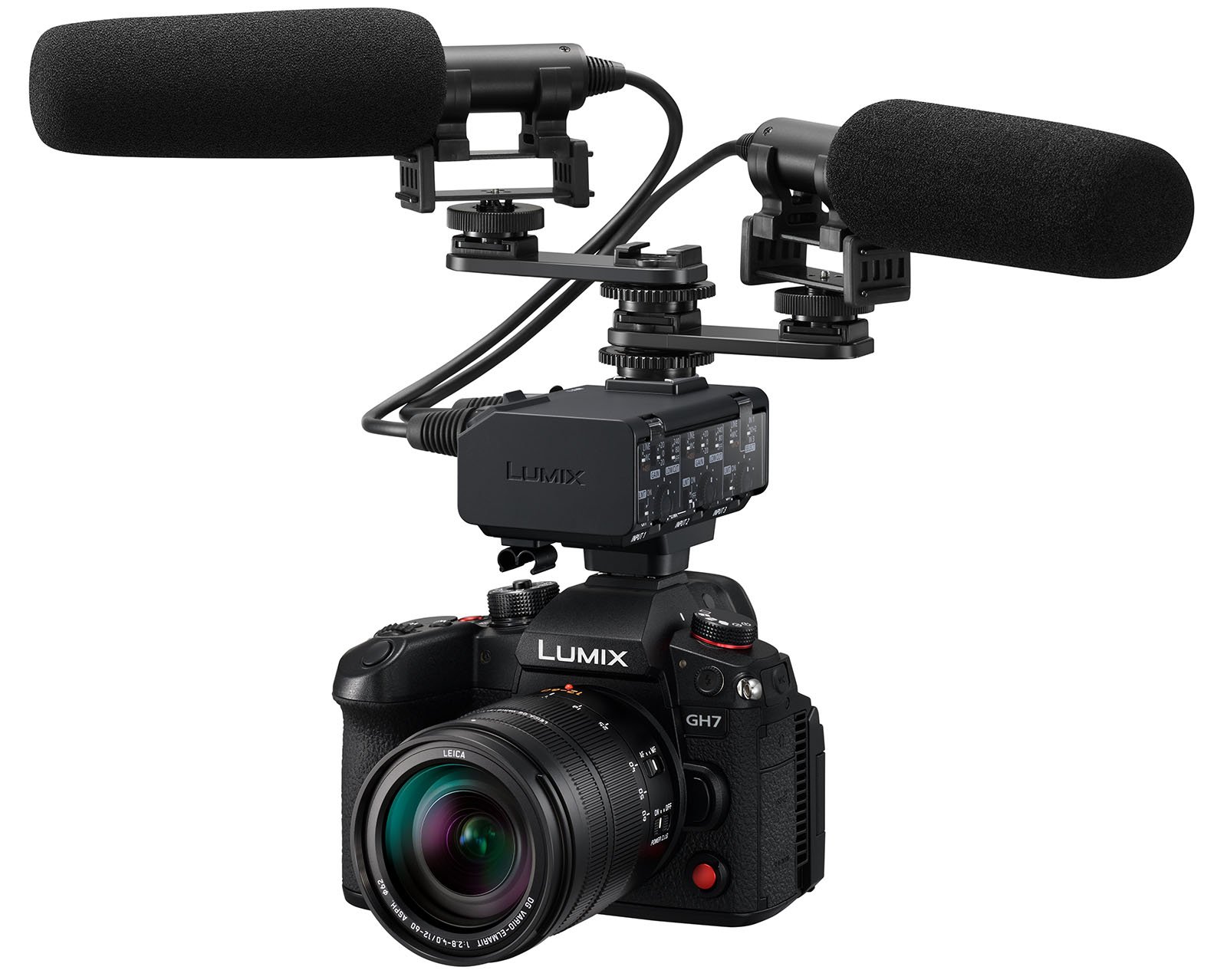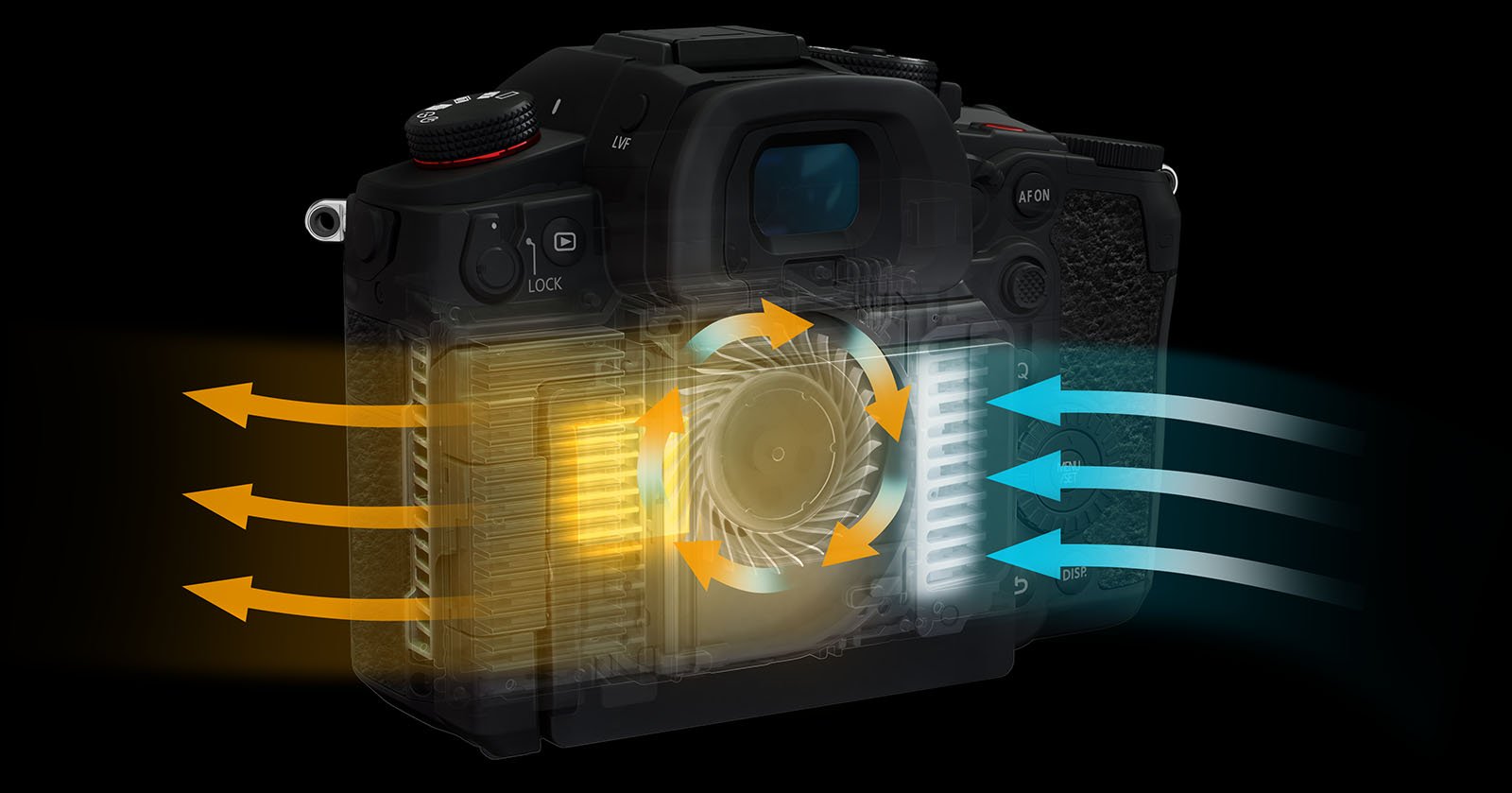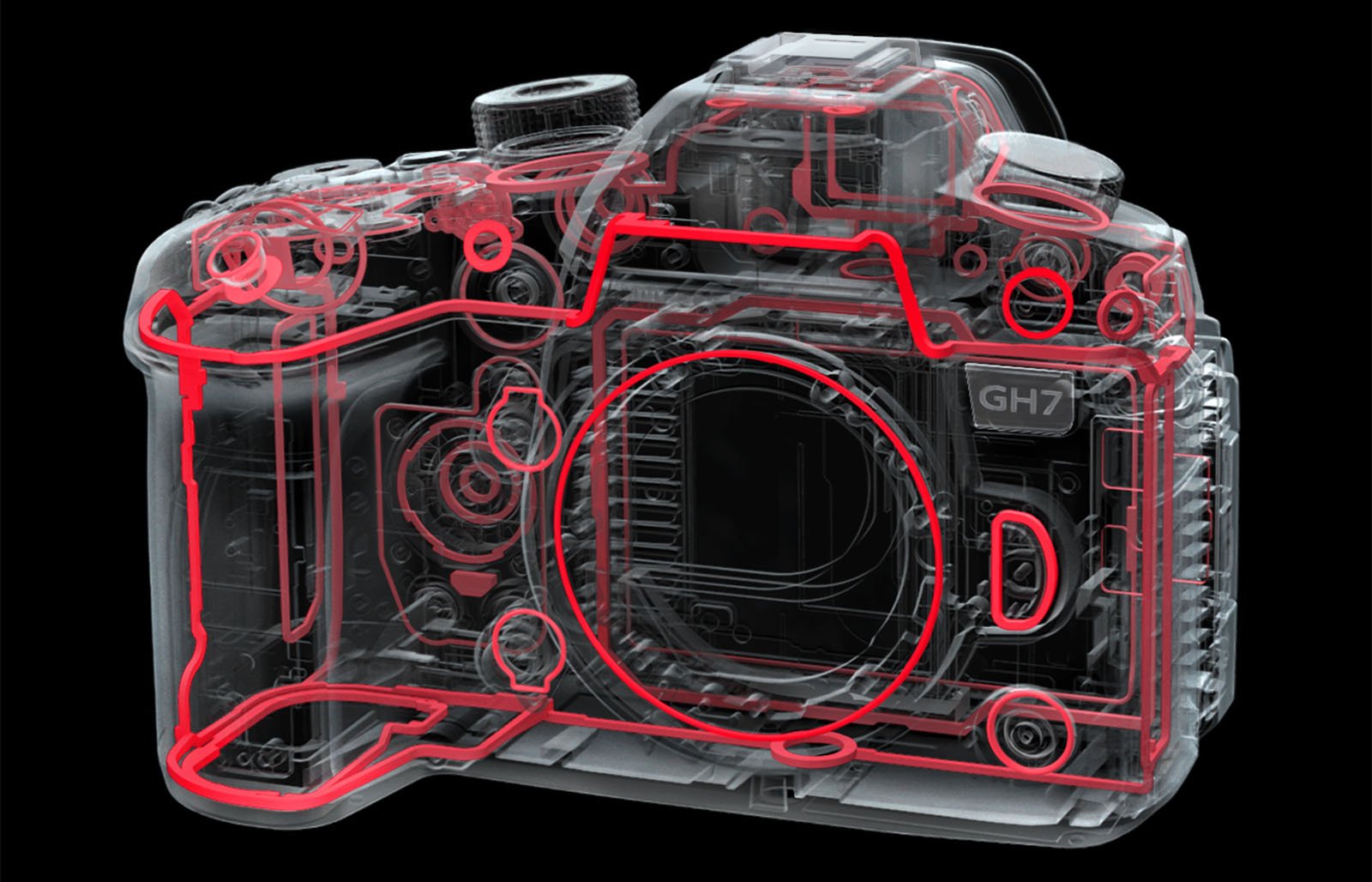![]()
Hot on the heels of announcing the full-frame Lumix S9 camera, Panasonic is showing its Micro Four Thirds Lumix G system some love with the new Panasonic Lumix GH7 camera.
The latest flagship Lumix G camera, the GH7, promises “outstanding video performance” thanks to a newly developed 25.2-megapixel BSI CMOS image sensor and improved autofocus with phase-detect technology. The camera also offers numerous pro-oriented workflow improvements including internal Apple ProRes RAW recording. It is also the world’s first interchangeable lens camera with 32-bit float recording (requires the optional XLR microphone adapter (DMW-XLR2)).
![]()
Newly Developed 25.2 Megapixel Image Sensor
At the core of the GH7 is a redesigned 25.2-megapixel BSI CMOS image sensor with a faster readout speed and improved image quality, including a promised 13-plus stops of dynamic range.
While the sensor has the same megapixel count as the GH6’s chip, it features a fundamentally different architecture from that sensor and has been built from the ground up for the GH7. It is not just the GH6’s sensor with PDAF pixels thrown on, as Panasonic says the sensor incorporates the necessary changes to include the revised Dynamic Range Boost (DR Boost) performance from last year’s Lumix G9 II.

GH7 Offers G9 II’s Photo Features
The GH7 may primarily be designed for hybrid and video-first shooters, but it also has quite a bit on offer for Micro Four Thirds photographers. The G9 II is still clearly the camera Panasonic gears more towards still shooters — even if it is excellent for video, too — but the GH7 is fully capable for photography. Thanks to the introduction of PDAF, the camera promises improved autofocus performance, especially in challenging situations and when tracking moving subjects.
The camera includes AI-powered subject detection that can track humans and animals alongside a range of vehicles, like cars, motorcycles, trains, and airplanes. These latter two subjects are new inclusions.
![]()
Like the new Lumix S9 full-frame camera, the GH7 works with the new Lumix Lab app, which enables users to create LUTs (lookup tables), which are like picture profiles. While videographers have long relied on LUTs to dial in the optimal look for footage, LUTs are also helpful for photographers.
The GH7 also features more typical image profiles, including some created by Leica as part of Panasonic and Leica’s robust relationship. The GH7 features Leica Monochrome, unlike the GH6.
![]()
The GH7’s in-body image stabilization will prove helpful for photo and video users alike. The camera promises up to 7.5 stops of shake correction and also has electronic image stabilization (EIS), including a “high” mode, which promises to deliver even better stabilization with a relatively lower crop than a full-frame camera with EIS. The IBIS also helps photographers by virtue of a 100-megapixel pixel-shift mode, which can be used entirely handheld.
![]()
Unprecedented Video and Audio Features in the Lumix G System
Shifting gears into video features and workflow, there is a lot to cover with the GH7. The camera offers ample internal recording options, including 5.7K 30p ProRes 422 HQ and ProRes RAW HQ modes. It also provides 4:2:2 10-bit Full HD video at up to 240 frames per second and 4:2:2 10-bit C4K/4K UHD video at up to 60p. The camera can also record simultaneously to its internal CFexpress Type B card and an external recorder over its full-size HDMI port.
![]()
The GH7 also offers full sensor open gate recording, otherwise known as flexible framing, enabling users to record 4:3, 3:2, 16:9, 1:1, and 9:16 video. The 4:3 video tops out at 5.8K resolution and 29.97p, while the 17:9 5.7K video can be recorded up to 59.94p. The GH7 can shoot 4K footage at up to 120p, although it is 4:2:0.
![]()
As for workflow, the GH7 works natively with Frame.io’s Camera to Cloud platform, enabling the sending of proxy video files to off-site editors. Photographers can also take advantage of this by sending RAW and JPEG images into the cloud while shooting.
There are also plenty of features to help videographers, including monitoring functions like waveforms and vector scope. The camera also has frame markers and indicators, a safety zone marker, an enlarged focus assist, a shutter angle display, and a luminance spot meter.
![]()
On the audio side, the GH7 offers significant improvements, including 32-bit float recording when using the optional new DMW-XLR2 XLR mic adapter. In short, 32-bit float recording provides significantly expanded bit depth which expands the dynamic range of audio recording and reduces the risk of clipping at either extreme. It also allows more flexibility when adjusting audio levels.
The camera also supports 4ch audio recording, provided that users take full advantage of the XLR adapter. There are two channels on the XLR and two in the camera’s 3.5mm audio port, which can be split across two channels. It’s possible to get up to 96KHz audio sampling, which is unprecedented in the GH series. 4ch audio only works with MOV and ProRes codecs, by the way.

The Lumix GH7 can record unlimited video — well, unlimited in the sense that the camera allows users to keep recording until there’s no storage space or power. Like the GH6, the GH7 incorporates an active cooling solution. The GH7 has a cooling fan in the back to pull heat from the sensor and recording areas of the camera and push it out. The camera also has clever graphite materials to help exhaust heat from integral, hot components.

The active cooling doesn’t preclude weather resistance, as the camera is water- and dust-resistant. It’s not waterproof, of course, but it is built to withstand the rigors of professional use cases, including inclement weather.

There are also a couple of design improvements worth noting. The camera has the same EVF as the G9 Ii, a 3.68-million dot OLED with 0.8x magnification, up from 0.76x on the GH6. The joystick also has improved control across eight directions.
![]()
Panasonic Licenses ARRI LogC3 for the GH7
Panasonic has also announced that it has partnered with ARRI to offer a new paid upgrade, software upgrade key DMW-SFU3A, for the GH7. This key, price unspecified, adds the ARRI LogC3 curve to the GH7, which enables the GH7 to color-match with ARRI cameras. This upgrade, while not beneficial for all GH7 users, while make the GH7 exceptionally useful on high-end productions.
“Shooting in ARRI LogC3 on the Lumix GH7 is a perfect solution for situations that require added flexibility, such as mounting on a gimbal or drone. The Lumix GH7 can easily match colors in shooting situations where cinema cameras, such as the ARRI Alexa Mini, are used as the main camera,” Panasonic explains.
When the ARRI LogC3 upgrade is installed, the GH7 uses a curve that conforms to the standard sensitivity of ISO 800 of the ARRI gamma. However, since the gamma curve doesn’t change depending on ISO sensitivity, users can employ the same editing workflow regardless of ISO setting.
Pricing and Availability
The Panasonic GH7 will be available in July for $2,199.99.
Image credits: Panasonic
